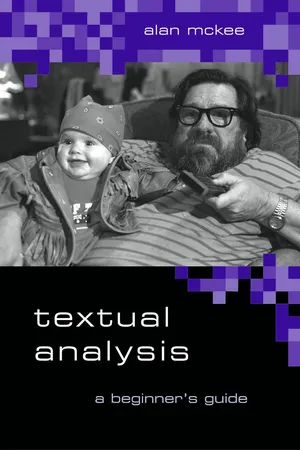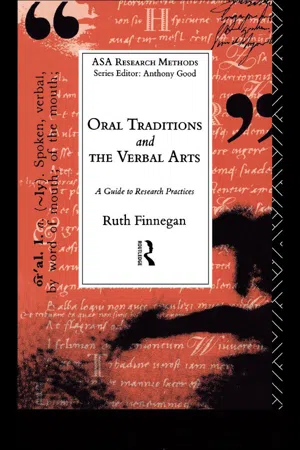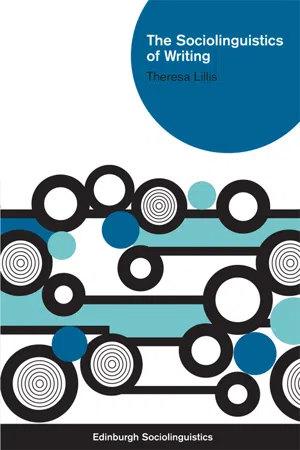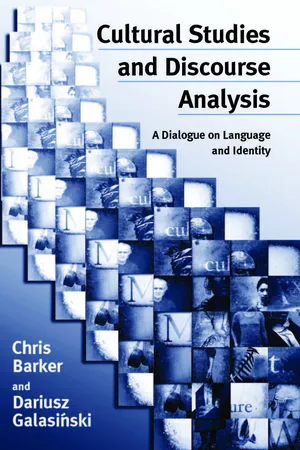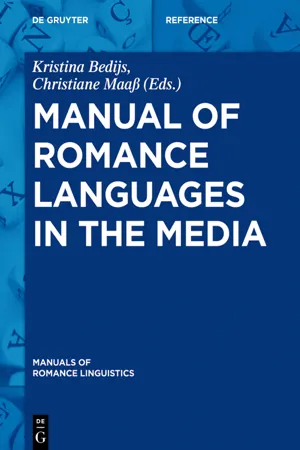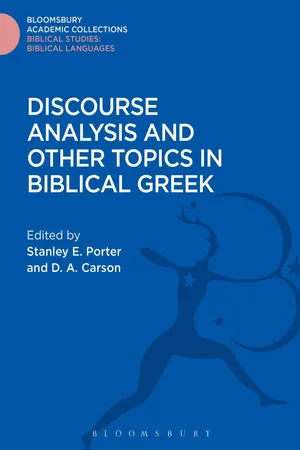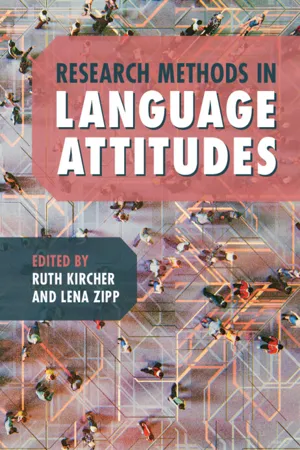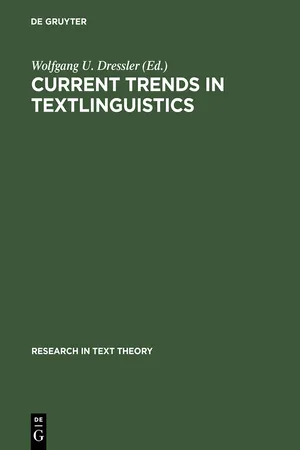Languages & Linguistics
Textual Analysis
Textual analysis is a method of examining and interpreting written, spoken, or visual texts to understand their underlying meanings, themes, and structures. It involves close scrutiny of language, style, and rhetorical devices to uncover the intended messages and implications within the text. This approach is commonly used in literary studies, media studies, and communication research to gain insights into the nuances of language and communication.
Written by Perlego with AI-assistance
Related key terms
1 of 5
12 Key excerpts on "Textual Analysis"
- eBook - ePub
Textual Analysis
A Beginner′s Guide
- Alan McKee(Author)
- 2003(Publication Date)
- SAGE Publications Ltd(Publisher)
What is Textual Analysis?
1
What is Textual Analysis?
Textual Analysis is a way for researchers to gather information about how other human beings make sense of the world. It is a methodology – a data-gathering process – for those researchers who want to understand the ways in which members of various cultures and subcultures make sense of who they are, and of how they fit into the world in which they live. Textual Analysis is useful for researchers working in cultural studies, media studies, in mass communication, and perhaps even in sociology and philosophy.Let’s open with a straightforward description What is Textual Analysis? When we perform Textual Analysis on a text, we make an educated guess at some of the most likely interpretations that might be made of that text.We interpret texts (films, television programmes, magazines, advertisements, clothes, graffiti, and so on) in order to try and obtain a sense of the ways in which, in particular cultures at particular times, people make sense of the world around them. And, importantly, by seeing the variety of ways in which it is possible to interpret reality, we also understand our own cultures better because we can start to see the limitations and advantages of our own sense-making practices.Is that the only way to study texts?
Of course, I’m trying to make things simple here, and nothing is really that simple. This book only introduces one version of Textual Analysis. Academics who do ‘Textual Analysis’ actually practise a huge range of methodologies – many of which are mutually contradictory and incompatible (for a sense of this range, see Allen, 1992). This book explains a form of ‘Textual Analysis’ whereby we attempt to understand the likely interpretations of texts made by people who consume them. This is not the only ‘correct’ methodology for gathering information about texts. Other approaches can also produce useful information: no approach tells us the ‘truth’ about a culture. It’s important to realize that different methodologies will produce different kinds of information – even if they are used for analysing similar questions. - eBook - PDF
- Roel Popping(Author)
- 2000(Publication Date)
- SAGE Publications Ltd(Publisher)
1 Text analysis: What and why? Text analysis encompasses a class of techniques for the social scientific study of communication. From one point of view text analysis, or content analysis, can be contrasted with observation. I Central to it is not the material, the visible, the audible, but the invisible: the world of meanings, values, norms as these are made accessible by symbolic behaviour (language, literature, plastic art, music). The 'content ' in content analysis is the material's meaning, i.e ., the social significance behind the visible or audible symbols in papers, books, film, recordings, pictures, paintings, or behind human activities in radio-and television broadcasts or in films. The focus is especially on the content of the message, by preference in mass communication where the message is addressed to many other people. Originally text analysis was used primarily to draw conclusions regarding the source of the message. Sources were often a collectivity, such as an organiza-tion, or a government. (See for example George [1959b].) However, communi-cation is more broadly understood as involving message, channel, audience, as well as source. In fact, these four aspects of communication represent the most common contextual variables used in analyses of texts and transcripts (Roberts, 1997b).2 Beyond examining symbolic content within various contexts, text analysis is used in bringing struc ture to an enormous amount of rather unstructured information. This allows the investigator to make explicit various aspects that might not be noticed by a lay observer. In this way a better understanding can be gained in certain aspects of societal processes. But the meaning of text analysis remains illusive. One might ask whether sensory perception can have the invisible and immaterial as its object. - eBook - ePub
Oral Traditions and the Verbal Arts
A Guide to Research Practices
- Ruth Finnegan(Author)
- 2003(Publication Date)
- Routledge(Publisher)
8 Analysing and comparing texts: style, structure and contentMost accepted methodologies within literary and linguistic study can in principle be applied to oral texts once they are represented in written form. Indeed Textual Analysis has often been taken as the method for studying verbal forms, following the model of text as something bounded and organised, a unit through which the traditional methods of philological and literary scholarship can be extended to unwritten forms. Rather than trying to cover all these methodologies, I have concentrated here on those particularly exploited in analysing oral forms (with some brief further discussion in 8.5 ). I have also mainly left to one side the problematics within the concept of text (on which see 1.4 ) or its broader sense as ‘any coherent complex of signs’ (Bakhtin 1986:103), so the focus here, as in most traditional forms of Textual Analysis, is primarily on textsas-verbal.The presentation is within a vaguely historical order, but methodologies in practice overlap in time and coverage, and ‘old’ methods take on new twists. Some topics such as typology or narrative could have been treated under several heads, while terms like ‘style’ and ‘structure’ can be interpreted in differing senses (here ‘style’ is mainly taken as lower-level aspects, ‘structure’ as more the overall form and its constituent divisions). Amidst these continuing over-laps and ambiguities, the categories and ordering here are for convenience not definitive classification.8.1 Textual Analysis: PROBLEMS AND OPPORTUNITIES
There are continuing arguments about the value of focusing on verbal texts. Some issues are broadly theoretical and concern such questions as the evaluation of contrasting perspectives for studying oral forms or problems in the concept of ‘text’. Others relate to practical questions of access or resources. It may thus be as well not to take it for granted that analysing the verbal text-as-given is the only possible focus, but also to weigh up such questions as the following: - eBook - PDF
- Theresa Lillis(Author)
- 2012(Publication Date)
- Edinburgh University Press(Publisher)
As the discussion in the previous section illustrates, all types of socially oriented analyses of written texts involve grappling in some way with the relationship between form and function, and also, although often not explicitly mentioned, content. In the following section I want to continue with a focus on approaches to verbal text analysis but turn my attention to some particularly influential tradi-tions of analysis of verbal written texts, and also use these to illustrate some of the unresolved tensions (or challenges), in particular the troublesome notion of genre . TRADITIONS OF WRITTEN TEXT ANALYSIS Critical discourse analysis Discourse is used to signal a range of approaches to language, including writing, and if we adopt the first definition in Box 3.2 most of the work discussed in this chapter could be described as ‘discourse analysis’. However, a key distinction in dis-course analytical approaches to written texts can be made between those approaches which stay close to texts, thus keeping the functional interest closer to form, and those approaches which can be described as working outwards towards the social functions of the text, often by drawing on social theory (the latter being evident in definitions 3 and 4 in Box 3.2). There are many researchers working within this latter tradition who, building in particular on the work of Fairclough (e.g. 1992, 2001) explicitly seek to combine close linguistic analysis with social analysis. Fairclough explicitly draws on the work of social theorists, notably Foucault (1972) to develop what he calls TODA, Text Oriented Discourse Analysis. Within this approach, the goal is to pay attention to micro level features of the text whilst also connecting these to more interpretive and explanatory macro social categories to look at ‘orders of discourse’ (Fairclough 1992, Chapter 3. See Box 3.2). - eBook - ePub
Cultural Studies and Discourse Analysis
A Dialogue on Language and Identity
- Chris Barker, Dariusz Galasinski(Authors)
- 2001(Publication Date)
- SAGE Publications Ltd(Publisher)
Fairclough argues that interTextual Analysis is useful in discovering the networks which texts move through including the transformations they undergo as they shift from one site to another (for example, the journey of a political speech or a press release as it becomes a news story). Further, the assumption of intertextuality makes manifest the historicity of texts. Texts are the product of other culturally situated texts combined into a new structure. The exploration of intertextuality helps uncover what Fairclough calls the ‘orders of discourse’ of a social domain. That is:the totality of its discursive practices, and the relationships (of complementarity, inclusion/exclusion, opposition) between them – for instance in schools, the discursive practices of the classroom, of assessed written work, of the playground, and of the staff room. The order of discourse of a society is the set of these more ‘local’ orders of discourse and the relationships between them. (Fairclough, 1995a: 132)The linguistic tools of discourse analysis
In this section we explore the fault-lines which discourse analysis searches for during the dissection of texts. We are seeking to achieve an analytic template that could be deployed in the analyses of cultural texts through reviewing the analytic categories by which a discourse analyst is likely to scrutinize texts.There are two ways in which this task can be achieved. On the one hand, the discussion can be framed in terms of ‘levels of language’ (Fairclough, 1989, 1992). Thus, a text is approached as vocabulary, grammar and textual structure. On the other hand, an analytical template can be designed in terms of textual functions (Fowler, 1991).While there are good reasons for discussing the material in either way, we have decided on the latter approach (i.e. discussion in terms of the text functions) in order to keep the problems of representation, interaction and textual form analytically separate. As our interview data are largely non-interactive, and, moreover, it is their representational aspects that we are particularly interested in, a clear distinction between textual functions should make for a more lucid and precise discussion of the data. However, other ‘templates’ will provide us with a useful crosschecking of our exposition. - eBook - PDF
Text, Context, Pretext
Critical Issues in Discourse Analysis
- H. G. Widdowson(Author)
- 2008(Publication Date)
- Wiley-Blackwell(Publisher)
Although Eng-lish is specifically mentioned here, the same would presumably apply to any language. Perhaps the first thing to be clear about is that the aim of the grammar so formulated is to account for text as a linguistic unit in its own right, to explain it as such and not simply to use it to exemplify the 18 Text and grammar occurrence of other structural units, like clauses or phrases. The purpose, it would appear, is not therefore to show how different grammatical features simply show up in stretches of language, but how they operate to form larger units of meaning. As Halliday says: ‘The grammar, then, is at once both a grammar of the system and a grammar of the text’ (Halliday 1994:xxii). One might reasonably infer from this statement that text analysis is taken as a straightforward matter of applying the categories of the grammar. But only, it would appear, up to a point. Halliday explains that analysis works on two levels: One is a contribution to the understanding of the text: the linguistic analysis enables one to show how, and why, the text means what it does. In the process, there are likely to be revealed multiple meanings, alternatives, ambi-guities, metaphors and so on. This is the lower of the two levels; it is one that should always be attainable provided the analysis is such as to relate the text to general features of the language – provided it is based on the grammar in other words. At this level, then, application of grammatical categories reveals the proper-ties of the text, not only, we should notice, how it is constructed, but what it means. That is to say, the meaning is internally in the text, and under-standing derives directly from analysis. Analysis, it would seem, does not just contribute to, but actually constitutes understanding. Certainly there is no mention here of where any other contribution might come from. - eBook - ePub
- Kristina Bedijs, Christiane Maaß, Kristina Bedijs, Christiane Maaß(Authors)
- 2017(Publication Date)
- De Gruyter(Publisher)
Text Linguistic Approaches to Language in the MediaPassage contains an image Martina Schrader-Kniffki
2Text Linguistic Approaches I: Analysis of Media Texts
Abstract: Text linguistics as one key discipline in linguistic media research is nowadays challenged with an increased complexity of its subject. Media texts in tertiary media are often multimodal and address various semiotic dimensions through (hyper)text, moving or still pictures, sound, and graphic effects. This article outlines theoretical approaches to the analysis of media texts in the era of multimodality with a focus on film and television text, which are usually characterized by linearity and a separation of the producer and the receiver, as well as hypertext, which is characterized by nonlinearity and interactivity. Borders of texts, especially in online contexts, are becoming more and more blurred and require new analytical approaches.Keywords: film, hypertext, interactivity, linearity, multimodality, television, text linguistics1Introduction
It is a generally accepted assumption that due to recent and ongoing technical innovation, text and media text are undergoing profound changes which interact with alterations in society. The general claim of the growing “visuality of society” indicates the nature of change that not only society but especially communication and text are experiencing (cf. Sutter/Mehler 2010): Lesser importance is being given to the written word, whereas other semiotic modalities, mainly visualization and design (cf. Eckkrammer/Held 2006, 1) take over the “informational weight” and seem to make written information almost superfluous (cf. Eder/Eckkrammer 2000). The dynamism of media change is bound to technical innovation. Research areas such as media studies, cultural studies, and linguistics are in the process of modeling the textual and linguistic innovation that emerges out of the processes of technological progress. Text linguistics as area of linguistic research that traditionally takes into consideration the complexity of language use in communication is the genuine field of research and theory-building that responds to the mentioned changes. - Stanley E. Porter, D.A. Carson, Stanley E. Porter, D.A. Carson(Authors)
- 2015(Publication Date)
- Bloomsbury Academic(Publisher)
There was a corresponding development away from mere theorizing about language to the analysis of texts as they actually occurred, and various schools of text-linguistics came into their own. This period—the 1980s—was also the most prolific for discourse analysis. Current research continues to attempt to develop discourse analysis or text-linguistics as an 'empirical text science' 22 with its own data-gathering, methods and principles of analysis. Whether 21. On tagmemics, see K.L. Pike, Language in Relation to a Unified Theory of the Structure of Human Behavior (The Hague: Mouton, 1967) (though originally published in three parts between 1954-60); on stratificational grammar, see S.M. Lamb, Outline of Stratificational Grammar (Washington, DC: Georgetown University Press, 1966); and on systemics, see the early work by T.F. Mitchell, The Language of Buying and Selling in Cyrenaica: A Situational Statement' {fiespiris 44 [1957], pp. 31-71), reprinted in his Principles ofFirthian Linguistics (London: Longman, 1975), pp. 167-200; and the numerous works by M.A.K. Halliday, especially the essays collected by G. Kress (ed.), Halliday: System and Function in Language (Oxford: Oxford University Press, 1976). 22. Beaugrande, 'Text Linguistics', p. 16. PORTER Discourse Analysis and New Testament Studies 21 success will be found still waits to be seen. In the 1990s the pace of pro-duction has slowed, since a number of early proponents, such as van Dijk, have become interested in related fields of study while the disci-pline of linguistics as a whole has entered a different phase. Beaugrande has characterized this as a period of stagnation, 23 although a more chari-table view might be that it is a period of reflection and consolidation, as the discipline takes stock of its gains. Regarding the progress of dis-course analysis, in 1968 Gleason could state that 'discourse analysis is really just getting underway.- eBook - PDF
Subject-oriented Texts
Languages for Special Purposes and Text Theory
- Hartmut Schröder(Author)
- 2011(Publication Date)
- De Gruyter(Publisher)
LITA LUNDQUIST Some Considerations on the Relations between Text Linguistics and the Study of Texts for Specific Purposes Introduction Linguistic approaches to the study of language for specific purposes often tend to be empirically based and have empirical goals, which is quite normal for analyses within applied linguistics, to which the investigation of language for specific purposes can be said to belong. It is therefore not surprising that text linguistic approaches to language for specific purposes tend, to an even higher degree, to take empirical directions. In this paper I shall try, however, to take a theoretical standpoint and present a survey of some of the latest developments in theoretical text linguistics which might in future research be explored further in order to shed light on what can be considered to be the specificities of texts for specific purposes , TSP. 1 This sounds far simpler than it actually is, there being no homogeneous text linguistic theoretical framework for the time being: text linguistics, as I see it, rather consists of different approaches which at different levels — syntactic, semantic, pragmatic, cognitive, sociological — analyse what consti-tutes different aspects of textuality, i. e. analyse various aspects of what makes a text hang together. These various textlinguistic approaches fall into two major groups, of which the first sees textuality in the aspect of the text as a coherent whole. In 1 In this, and the following notes, you find some of the theses given by the specialist of Fachsprache and Fachtexte, Lothar Hoffmann, who, in a handout on Funktionen und Merkmale wissenschaftlich-technischer Fachtexte, 1987, gives the following definition of language for specific purposes: Eine Fachsprache ist die Gesamtheit aller sprachlichen Mittel, die in einem fachlich begrenzten Kommunikationsbereich verwendet werden, um die Verständigung zwischen den in diesem Bereich tätigen Menschen zu gewährleisten. - eBook - PDF
What Writing Does and How It Does It
An Introduction to Analyzing Texts and Textual Practices
- Charles Bazerman, Paul Prior, Charles Bazerman, Paul Prior(Authors)
- 2003(Publication Date)
- Routledge(Publisher)
InterTextual Analysis examines the relation of a statement to that sea of words, how it uses those words, how it positions itself in respect to those other words. There may be many reasons for analyzing the intertextuality of a text. We may want to understand how a school district’s policy statement is drawing on or speaking to educational research and po- litical controversies. We may want to see how students in their writing are expressing knowledge of what they are learning from biology. We may want to understand what techniques are necessary for students to comment in- telligently and critically on what they read in history. We may want to un- derstand how students learn to write arguments informed by the best knowledge available, or we may want to see how some popular texts are deeply parts of contemporary culture. Learning to analyze intertextuality will help you pick through the ways writers draw other characters into their story and how they position them- selves within these worlds of multiple texts. It will help you see what sources researchers and theorists build on and which they oppose. It will help you identify the ideas, research, and political positions behind policy documents. It will help you identify what students know about negotiating the complex world of texts, what they have yet to learn, and how their need for particular intertextual skills will vary depending on the tasks they are addressing. Finally it will help you see how students and schools are them- selves represented, made sense of, and given identity through intertextual resources that characterize students and schools. AN EXAMPLE To give you a concrete sense of how intertextuality works, consider the fol- lowing opening of a section from Education Week of October 5, 2000, on the current state of the middle school. The Weak Link By Ann Bradley and Kathleen Kennedy Manzo The middle grades are feeling the squeeze. - eBook - PDF
- Ruth Kircher, Lena Zipp(Authors)
- 2022(Publication Date)
- Cambridge University Press(Publisher)
Then audience research might be carried out to find out how readers interpret the texts. They note that very few critical discourse analysts do this (2002: 82), without acknowledging that this may be very difficult in practice, particularly for a researcher with no connections to the news media. It is always useful, however, to identify what discourses a text may draw on, as noted just above. CDA techniques that allow this can include analysing the vocabulary and grammar (e.g. nominalisation, transitivity, modality) used in particular texts to determine whether they are associated with particular ideolo- gies and express particular attitudes; examining metaphor usage; and analysing the manner in which sentences are formed to determine whether they reveal a particular meaning that would not be present if a different morphosyntactic structure was used (for more detailed examples of focuses of analysis, see Fairclough 2014: 128–153). A further important level of analysis is what is termed intertextuality. Put simply, this refers to the fact that all discourses (or texts) draw on earlier events and earlier texts and they cannot be viewed in isolation from these. A particularly pronounced form of intertexuality is ‘mani- fest intertextuality, whereby texts explicitly draw on other texts, for instance by citing them’ (Fairclough 1992: 117; see also Jørgensen and Phillips 2002: 70). It is not necessary to use all of the research methods or techniques available to CDA studies in individual research studies; rather the choice of methods will rest on the aims and scope of the particular study in question. In Section 2.6, a short case study is outlined where a small sample of French language advice columns is analysed in terms of one of the features just outlined, namely their intertextual features, to determine how these are linked to particular language ideologies and the attitudes they point to. - eBook - PDF
- Wolfgang U. Dressler(Author)
- 2014(Publication Date)
- De Gruyter(Publisher)
This is, of course, mainly a semantic and a pragmatic question. The concept of text processing, then, approaches structural properties of texts within a specific pragmatic framework which aims at describing factors which play a role in what participants do with a literary text. It was pointed out above, that promising approaches to the semantics of literature have taken this approach. 146 G. Wienold Established procedures of text processing like criticism, interpretation, codifi-cation in literary history, didactic uses of texts, then, themselves become an object of study in the study of written works of art, because they can be considered to provide one type of empirical evidence for what participants do with regard to written works of art under specific conditions of text processing (Wienold 1972a,26 f., 146 ff.; Wienold 1976a, 1976 b, Wienold-Rieser 1976). In this report, we will be concerned with properties of texts which can be either shown or tentatively suggested to have some bearing on what partici-pants do with regard to texts. There are some empirical studies which enquired into the reactions of participants to texts particularly when a text was presented to them in segments. Also judgments of participants on what they believed the reaction to a text should be were investigated (Smith 1971, Squire 1964, Wilson 1966, Purves 1971, 708 ff.). Except for Smith 1971, this research is hardly of a structuralist or linguistic kind. Phenomena of the participation in a text by a participant like suspense, horror, emotional engagement have been hypothetically related to certain structural properties of texts. These phenomena of an engagement of the participant were structurally related to activities of the recipient in rearranging a narrative text. The sequential text is hypothesized to be rearranged by the recipient according to the order of events related by the sequential text (Wienold 1972a, 82ff., 1972e, 1975).
Index pages curate the most relevant extracts from our library of academic textbooks. They’ve been created using an in-house natural language model (NLM), each adding context and meaning to key research topics.
